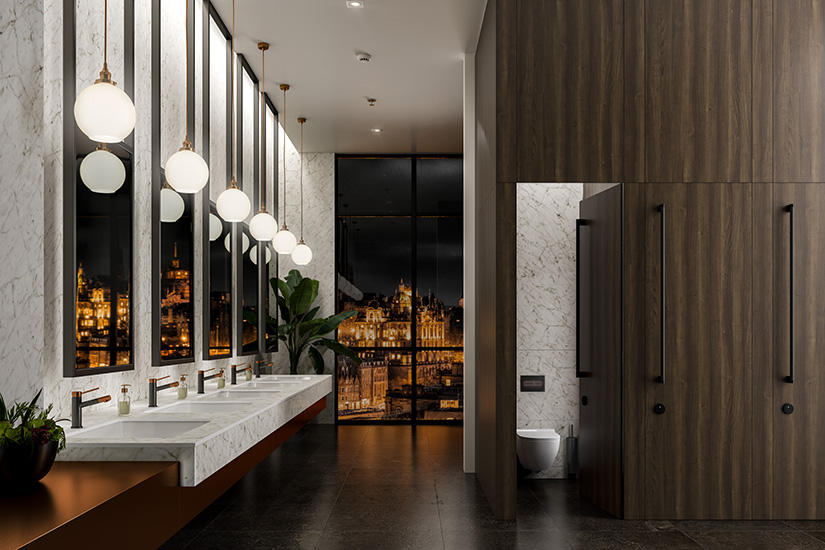Frequently Asked Questions – Laminate for washroom environments
Compact laminate and thin HPL are both popular choices for washroom environments, offering durability, hygiene, and design flexibility. This FAQ answers common questions about their differences, performance, and best-use scenarios in settings like toilet cubicles, changing rooms, and vanity units.

Can I use laminate sheets for washroom furniture?
Yes. Both HPL and compact laminate sheets can be used for washroom furniture and walls, depending on the structural needs and placement.
What is the difference between HPL and compact laminate?
HPL is a decorative surfacing laminate bonded to a substrate, while compact laminate is a solid, self-supporting material ideal for structural applications. Find out how it’s made here: High Pressure Laminate… it’s made of paper.
Is compact laminate waterproof?
Compact laminate is highly moisture-resistant, making it perfect for humid environments like changing rooms and shower cubicles.
What does self-supporting compact laminate mean?
Compact laminate has a solid core made by pressing multiple layers of kraft paper impregnated with resin. The result is a rigid, structural panel that doesn't require a substrate for strength — making it ideal for standalone elements like toilet partitions, cubicle walls and locker doors.
Can large laminate sheets help reduce installation time for fabricators?
Yes. Using large-format laminate sheets (e.g., 4300 x 1850mm) reduces the number of joints, minimises cutting and edging, and speeds up fabrication. Fewer joints also make it easier to clean and provides visual continuity, making large sheets a practical and aesthetic choice.
How does using large laminate sheets reduce waste?
The availability of large sheets of laminate allows fabricators to nest multiple components — like cubicle doors, pilasters, and vanity unit tops — from a single panel. This optimises material usage, reduces offcuts, and helps keep projects cost-effective and more sustainable.
What is the benefit of using both HPL and compact laminate in the same project?
HPL and compact laminate are colour-matched, allowing you to use compact laminate for structural applications and HPL for postformed furniture or vertical surfaces without disrupting the design. It’s a smart way to meet performance needs while maintaining consistency.
Can compact laminate be used for freestanding furniture?
Yes. Its self-supporting strength and water resistance make compact laminate ideal for benches, vanity units, changing room seating, and even integrated shelving in wet or high-impact environments. Where you have a more intricate design, postform HPL to a substrate to create smooth edges and creative pieces.
Is compact laminate suitable for high-traffic commercial washrooms?
Absolutely. It’s specifically engineered for durability in busy, demanding spaces such as schools, shopping centres, offices, and leisure facilities. It resists moisture, impact, and daily cleaning — making it a long-term, low-maintenance solution.
How do fabricators handle compact laminate during installation?
Compact laminate can be machined using standard carpentry tools (with carbide-tipped blades). Because it doesn’t need bonding to a substrate, installation is often faster. Mechanical fixings or specialist adhesives can be used, depending on the application.
Where can I get more technical information on compact laminate and HPL?
www.formica.info contains technical information for all products available in the Formica® Laminate collections.



